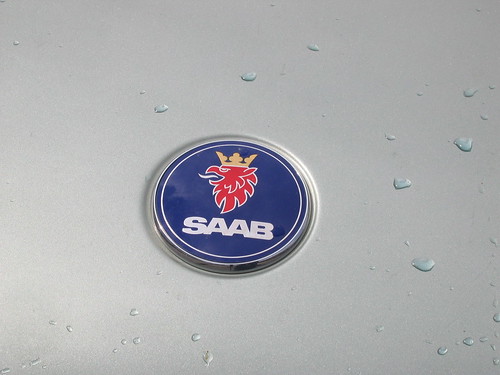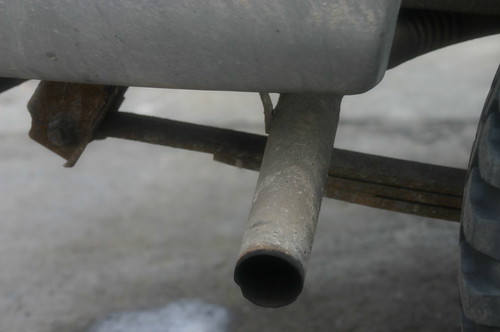(Source: Dow Jones via Wall Street Journal & LeftLane News.com, WTOP)
Italy’s Fiat is the new owner of most of Chrysler’s assets, closing a deal Wednesday that saves the troubled U.S. automaker from liquidation and places a new company in the hands of Fiat’s CEO. The deal creates a leaner company known as Chrysler Group LLC, which is not in bankruptcy protection and is free of billions in debt, 789 underperforming dealerships and burdensome labor costs that hobbled the old Chrysler LLC. The future of Chrysler Group LLC began to take shape Wednesday as its new leadership announced sweeping management and organizational changes.
The announcements came as Chrysler merged its assets with Fiat SpA (FIATY), following a six-week bankruptcy process for the U.S. auto maker. The last hurdle to the sale of Chrysler assets to Fiat was cleared late Tuesday when the U.S. Supreme Court rejected creditors’ objections to the deal.

The completion of the Chrysler deal bolsters President Barack Obama’s administration, which guided Chrysler through bankruptcy and hopes that a concurrent restructuring at General Motors Corp. (GM), which filed for Chapter 11 on June 1, will also be completed quickly.
Chrysler confirmed that its new Chief Executive is Sergio Marchionne, who also serves as Fiat’s CEO. Marchionne replaces Robert Nardelli, who served as Chrysler’s chief for the past 20 months. As reported, Robert Kidder, the lead independent director at Morgan Stanley, will become chairman of Chrysler’s new board of directors. Current Vice Chairman Jim Press will be appointed deputy CEO and special advisor, the company said.
Marchionne said in a letter to Chrysler employees that the company will be more focused and nimble, benefiting significantly from its global alliance with the Italian auto maker. The new Chrysler Group LLC noted that it would soon reopen Chrysler factories that were idled during the bankruptcy process, costing the automaker $100 million per day.
Under the old Chrysler, the automaker’s three brands – Chrysler, Dodge and Jeep – were all vertically integrated. However, Fiat has now separate all parts of Chrysler—including its Mopar parts division – with executives heading up each division. The new setup largely mirrors Fiat’s management style with its Fiat, Alfa Romeoand Lancia brands.
“The new company moves forward with significant strategic advantages, including a healthy balance sheet, a competitive cost structure, a leaner and more efficient dealer network, sound supplier agreements and significantly improved product quality and operational efficiency,” he said in the letter.
Chrysler, the smallest of the three U.S. auto makers, sought emergency government aid and was forced to file for bankruptcy in recent months owing to a steep decline in sales that drained the company’s cash. Chrysler enters this new chapter of its storied history at a time when the outlook for the auto industry remains bleak, amid continued economic weakness and tight credit conditions. Jim Press – Chrysler’s former co-president – might have been questioning his decision to move from Toyota to Chrysler in 2007 in recent weeks, but the automotive exec’s career is safe as Fiat CEO Sergio Marchionne has named Press the deputy CEO of the reborn Chrysler.
in 2007 in recent weeks, but the automotive exec’s career is safe as Fiat CEO Sergio Marchionne has named Press the deputy CEO of the reborn Chrysler.
Michael Manley, Michale Accavitti and Peter Fong, all of whom were previously with Chrysler, will run Jeep, Dodge and Chrysler, respectively. Pietro Gorlier, who joins Chrysler from Fiat, will head Mopar.
Chrysler’s swift passage through about six weeks of bankruptcy proceedings was helped by the involvement of the Obama administration’s auto task force, which provided billions in financing and helped negotiate a deal with the company’s stakeholders.
As part of the reorganization plan, the new Chrysler will be 20% owned by Fiat, while more than 55% will be controlled by the United Auto Workers union. Fiat’s stake could increase to 35% if the new company meets benchmarks intended to insure the development of fuel-efficient vehicles in the U.S., and it has the option to become the majority stakeholder once U.S. loans have been repaid. The U.S. and Canadian governments also have minority stakes.
The sale to Fiat SpA marks a victory for the Obama administration, which shepherded Chrysler LLC into Chapter 11 protection on April 30 with the hope that the company would emerge in a matter of months with a new partner.
“This morning’s closing represents a proud moment in Chrysler’s storied history,” said the Treasury Department in a written statement. “The Chrysler-Fiat Alliance has now exited the bankruptcy process and is poised to emerge as a competitive, viable automaker.”
The government will loan the new company $4.7 billion, to be repaid within eight years along with interest and $288 million in fees.
The Treasury had given Chrysler LLC $3.3 billion in debtor-in-possession financing to support the company throughout the bankruptcy process. Chrysler LLC remains in bankruptcy court, as it winds down operations, selling plants it doesn’t want, dispersing payments to debtholders and settling any other claims that were not transferred to the new company. Those actions could linger until next year, if not longer.
As part of the alliance, Fiat will contribute to Chrysler technology, platforms and powertrains for small- and medium-sized cars.
 The buyers have signed a letter of intention to buy Saab, SVT said on its website, citing anonymous sources and naming Koenigsegg and added that the negotiations could last for months.
The buyers have signed a letter of intention to buy Saab, SVT said on its website, citing anonymous sources and naming Koenigsegg and added that the negotiations could last for months.












